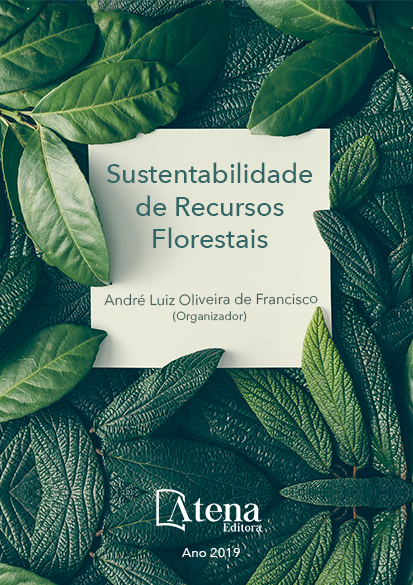
FATORES ABIÓTICOS DO SOLO NA DISTRIBUIÇÃO ESPACIAL DA BIOMASSA AÉREA EM ÁREAS DE CAATINGA NO NORDESTE BRASILEIRO
Estudos que investigam a relação
solo-planta são especialmente importantes
para subsidiar práticas de restauração em
áreas semiáridas. O presente estudo teve como
objetivo, avaliar o efeito de atributos físicos e
químicos do solo na variabilidade espacial
da biomassa aérea da vegetação em áreas
semiáridas. Tratando da seguinte hipótese: os
estoques de biomassa aérea vegetal em regiões
semiáridas são espacialmente dependentes de
propriedades físicas e químicas do solo. Para
isso, selecionou-se três áreas de Caatinga
situadas no município de Bom Jesus, região
sul do estado do Piauí, assim denominadas:
Caatinga Arbórea – CAr, Caatinga Arbustiva –
CArb e Caatinga Arbóreo-Arbustiva CAr-Arb.
As propriedades do solo consideradas para o
estudo foram: textura, pH, P, K+, Ca2+, Mg2+,
Al3+, Cu, Fe, Mn e Zn. A biomassa aérea foi
estimada mediante a utilização de equações
disponíveis na literatura. Para análise dos
dados utilizou-se as seguintes estatísticas:
testes de Kruskal-waliis (KW), análise de
componentes principais (ACP) e coeficiente de
correlação de Spearman. O solo da CAr, CArb e
CAr-Arb foram caracterizados por baixa, média
e alta fertilidade natural, respectivamente. A
biomassa aérea média variou de 15,44±9,24
Mg ha-1 na CArb a 121,92±84,41 Mg ha-1 na
CAr. A ACP e a análise de correlação apontam
que os aumentos nos estoques de biomassa
seguiram aumentos nos teores de nutrientes do
solo, silte e argila e decréscimo nos teores de
alumínio e areia. Diante dos resultados, observase
que o estoque de biomassa é dependente de
características do solo, em especial dos teores
de ferro, areia, silte e cobre.
FATORES ABIÓTICOS DO SOLO NA DISTRIBUIÇÃO ESPACIAL DA BIOMASSA AÉREA EM ÁREAS DE CAATINGA NO NORDESTE BRASILEIRO
-
DOI: 10.22533/at.ed.4451916015
-
Palavras-chave: semiárido, Caatinga, fitomassa, nutrientes minerais, textura do solo.
-
Keywords: semiarid, Caatinga, phytomass, mineral nutrients, soil texture.
-
Abstract:
Studies investigating the soil-plant relationship are especially important
to support restoration practices in semi-arid areas. The objective of this study was to
evaluate the effect of soil physical and chemical attributes on the spatial variability
of above ground biomass of vegetation in semi - arid areas. Treating the following
hypothesis: the stocks of above ground biomass in semi-arid regions are spatially
dependent on the physical and chemical properties of the soil. For this purpose, three
Caatinga areas located in the municipality of Bom Jesus, in the southern region of the
state of Piauí, were selected: Arboreal Caatinga (AC), Shruby Caatinga – (SC), and
Arboreal-Shruby Caatinga (ASC). The soil properties considered for the study were:
texture (sand, clay and silt), pH, P, K +, Ca2 +, Mg2 +, Al3 +, Cu, Fe, Mn and Zn. Above
ground biomass was estimated using equations available in the literature. To analyze
the data were used the statistics: Kruskal-waliis (KW) tests, Principal Component
Analysis (PCA) and Spearman’s correlation coefficient. The soil of AC, SC and ASC
were characterized by low, medium and high natural fertility, respectively. The average
above ground biomass ranged from 15.44 ± 9.24 Mg ha-1 in SC to 121.92 ± 84.41 Mg
ha-1 in AC. PCA and correlation analysis indicate that increases in biomass stocks
followed increases in nutrient content of soil, silt and clay and decrease in aluminum
and sand contents. In view of the results, it is observed that the biomass stock depends
on soil characteristics, especially iron, sand, silt and copper contents.
-
Número de páginas: 15
- Ramon de Sousa Leite


